How To Create Immersive Nightmares
Creating a spine-chilling horror game is an art that involves a delicate interplay of elements designed to evoke fear, tension, and an unmistakable sense of unease in players.
To mark the spooky season, we take a closer look at what it takes to craft successful horror games.
Make Players Feel Like Escape is Impossible
The best horror games instill a sense of dread by making players feel like there’s no escape. Moments of frantic button-mashing, where escape seems more difficult than anticipated, create intense and memorable experiences. The Flood in Halo stands out as a prime example. Though not strictly horror, this enemy changed the dynamics of the game by introducing a hive-mind style flocking enemy with unexpected movement in three dimensions. Their ability to climb up surfaces and attack from above leads to sudden ambushes befitting their name - leaving the player feeling utterly overwhelmed.
Silent Hill’s Lisa, a sporadically appearing enemy, epitomizes the power of uncertainty, making her a truly frightening presence. Sometimes she will appear behind the player, twitching uncontrollably and on occasion, Lisa will brutally attack the protagonist. Her ability to surprise the player and thwart any hopes of escape creates a sense of dread that’s crucial for good horror.
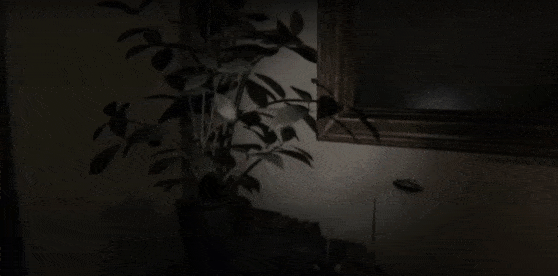
[Media: Gameplay from Silent Hill]
Successful horror games use game mechanics and enemy design to craft environments that engulf players in an unsettling atmosphere. A first-person perspective can enhance player immersion, making the experience more personal, while unpredictable enemy behavior, unexpected movement, and challenging encounters enhance the overall sense of danger. Pair that with well-designed and unsettling enemies that seem to be around every corner and you’ve got yourself a heart-pounding horror experience.
Prey on Common Fears
Leveraging common phobias can intensify the horror experience. Arachnophobia, the fear of spiders, is reported to be the most commonly experienced phobia in the world. Games like Skyrim and The Forest leverage this fear with spider-like enemies that evoke genuine terror in arachnophobes, coming up at the top of Outside Xtra’s list of the scariest spiders as ranked by an arachnophobe.
Successful horror games intelligently use creatures and game mechanics that tap into these common phobias, with many of the enemies that make it on The Gamers’ list of horror gaming’s scariest monsters pairing horrid design with dynamically unsettling spider-like locomotion.
Games That Caught Us in Their Web with Spider-Inspired Monsters
Silent Hill
Widely considered the scariest game franchise ever - you’re certain to find something that sparks your fears in Silent Hill. For the arachnophobes, there’s no shortage of enemies that combine the worst parts of spiders with the game’s hallmark twisted creativity.
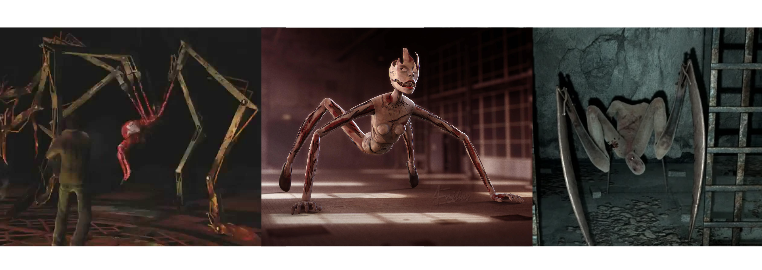
[From left to right: Silent Hill's Amnion, Scarlet and The Needler]
The Forest
Virginia from The Forest continues this trend with great success. The mutated Virginia has several limbs, similar to a spider, as well as claw-like hands protruding from its abdomen and a featureless head that strips this monster of any lingering human-like qualities. Virginia’s multiple legs aren’t its only spider-like detail, as it uses arachnid-like scuttling movement and lets out equally inhuman screeches.
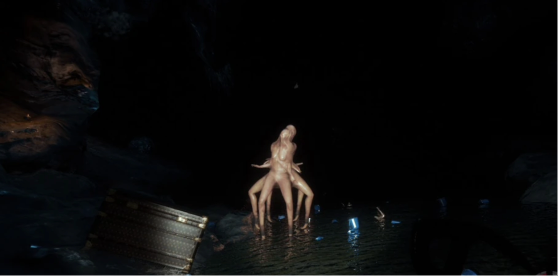
[Media: Virginia from The Forest]
The Evil Within
Another mutated monster with bug-like limbs and inhuman screeches, Laura from The Evil Within combines the appearance of a young girl with the disturbing characteristics of a spider, creating an unsettling and powerful enemy. What makes this monster so scary is her genius yet unsightly design and the terror she imbues, being both fast and powerful. You definitely wouldn’t want her crawling towards you in a dark alley.
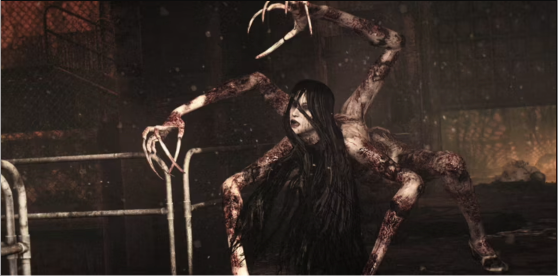
[Media: Laura from The Evil Within]
Combine Phobias and Dread for a Deadly Affect
Little Nightmares 2 introduces The Doctor. Visiting the doctor is an extremely common phobia - one that’s expertly played on with this sinister enemy, as being captured by him will end up with you on his operating table. The creepiest thing about The Doctor isn’t his morbid hobby, replacing limbs with mannequin parts, but instead it’s his unique ability to move in three dimensions. Unlike other enemies in Little Nightmares 2, he has the ability to navigate along any surface, like the ceiling, allowing him to find the protagonist hiding in places that otherwise would have provided cover. This combination of a common phobia with the ability to navigate varying surfaces creates a panic inducing antagonist and a disturbing feeling of no escape.
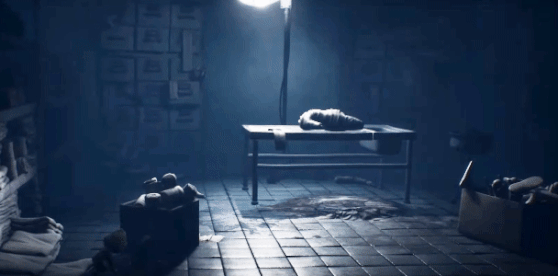
[Media: Gameplay from Little Nightmares 2]
Dead Space is a sci-fi horror game known for its chilling atmosphere and intense, dismemberment-focused combat, that uses varying enemies to expertly push every possible button of fear. The assortment of Necromorphs - the main enemy in Dead Space - provide a harrowing mix of gruesome character design, disturbing locomotion and overwhelming dread. Some crawl towards the player with horribly mutated bodies, others perform signature moves of clinging to a wall and shooting you from protruding tentacles. The uncertainty of not knowing which Necromorph you’ll find or from which angle they will attack makes for heart-thumping game play.
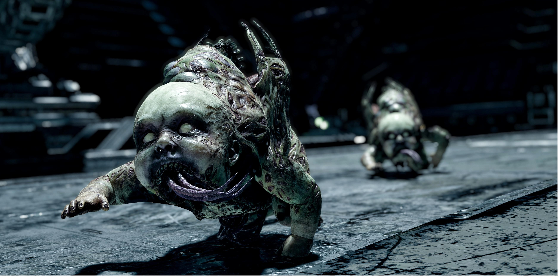
[Media: Lurkers from Dead Space]
How Your Studio Can Become Masters of Horror
The success of a horror game lies in its ability to masterfully weave together these elements. Crafting an immersive environment, instilling a feeling of inescapability and designing sinister characters with disturbing mechanics are all crucial. But perfecting each of these elements, and building the required technology, can take a huge team with varied skills. Thankfully, game studios can take advantage of AI plug-ins to streamline this process. Using game development AI can help to automate much of the manual work, freeing developers up to get creative with monster designs and compelling narratives, without compromise.
AI plug-ins offer an effective way for developers to bring NPCs and enemies to life with frightening effect, like Xenomorphs in our recent blog post exploring effective NPC AI.
For the horror game maker - AI middleware like Kythera AI’s Surface Navigation uses AI to easily navigate characters and vehicles that move on and around the surfaces of 3D terrain, with any orientation. It makes creating creepy-crawlies and enemies that traverse fully 3D surfaces like walls and ceilings simple, intuitive and cost effective. By using AI for Surface Navigation, studios can easily realize unique and unexpected characters, like the mutant Necromorphs or the macabre Doctor, that elevate horror games to cult classics.
To have a bit of fun, we created a Halloween horror game promo using Surface Navigation to show you just how effective this unique AI solution is.
Here we break down a step-by-step guide to making this level with Surface Navigation to show you just how simple it is to create unique agents and games in any genre.
Get in touch to discuss how Surface Navigation can help you bring their fears to life.